Support Village Voice News With a Donation of Your Choice.
Guyana, officially the Co-operative Republic of Guyana, is a sovereign state on the northern mainland of South America. It is, however, included in the Caribbean Region due to its strong cultural, historical, and political ties with other Anglo Caribbean countries and the Caribbean Community (CARICOM). Guyana is bordered by the Atlantic Ocean to the north, Brazil to the south and southwest, Suriname to the east and Venezuela to the west. With 215,000 square kilometres (83,000 sq mi), Guyana is the fourth-smallest country on mainland South America after Uruguay, Suriname and French Guiana (usually known as a department rather than a country).

The region known as “the Guianas” consists of the large shield landmass north of the Amazon River and east of the Orinoco River known as the “land of many waters”. Originally inhabited by several indigenous groups, Guyana was settled by the Dutch before coming under British control in the late 18th century. It was governed as British Guiana, with mostly a plantation style economy until the 1950s. It gained independence in 1966, and officially became a republic within the Commonwealth of Nations in 1970. The legacy of British rule is reflected in the country’s political administration and diverse population, which includes Indian, African, Amerindian, and multiracial groups.

Guyana is the only South American nation in which English is the official language. The majority of the population, however, speak Guyanese Creole, an English-based creole language, as a first language. In addition to being part of the Anglophone Caribbean, Guyana is one of the few Caribbean countries that is not an island in the West Indies. CARICOM, of which Guyana is a member, is headquartered in Guyana’s capital and largest city, Georgetown. According to the Oxford English Dictionary, Guyana is derived from an Indigenous Amerindian language and means “land of many waters”.

There are nine indigenous tribes residing in Guyana: the Wai Wai, Macushi, Patamona, Lokono, Kalina, Wapishana, Pemon, Akawaio and Warao. Historically the Lokono and Kalina tribes dominated Guyana. Although Christopher Columbus sighted Guyana during his third voyage (in 1498), the Dutch were the first to establish colonies: Essequibo (1616), Berbice (1627), and Demerara (1752). After the British assumed control in 1796, the Dutch formally ceded the area in 1814. In 1831 the three separate colonies became a single British colony known as British Guiana. In 1838, some Indians, who served as lower-caste indentured servants, were transported from Indian villages to Guyana, where they intermixed with the Guyanese and formed half of today’s Guyanese population.

Since its Independence in 1824 Venezuela has claimed the area of land to the west of the Essequibo River. Simón Bolívar wrote to the British government warning against the Berbice and Demerara settlers settling on land which the Venezuelans, as assumed heirs of Spanish claims on the area dating to the sixteenth century, claimed was theirs. In 1899 an international tribunal ruled the land belonged to Great Britain. Guyana achieved independence from the United Kingdom on 26 May 1966 and became a republic on 23 February 1970, remaining a member of the Commonwealth.
The chief majority (about 90%) of Guyana’s 0.74 million population lives along a narrow coastal strip in which ranges from a width of 16 to 64 kilometres (10 to 40 mi) inland and which makes up approximately only 10% of the nation’s total land area. The present population of Guyana is racially and ethnically heterogeneous, with ethnic groups originating from India, Africa, Europe, and China, as well as indigenous or aboriginal peoples. Despite their diverse ethnic backgrounds, these groups share two common languages: English and Creole.
The largest ethnic group is the Indo-Guyanese (also known as East Indians), the descendants of indentured servants from India, who make up 43.5% of the population, according to the 2002 census. They are followed by the Afro-Guyanese, the descendants of slaves from Africa, who constitute 30.2%. Guyanese of mixed heritage make up 16.7%, while the indigenous peoples (known locally as Amerindians) make up 9.1%. (atlasofhumanity.com)

















